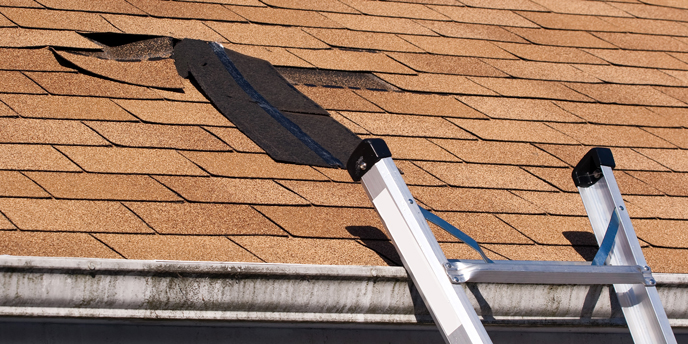In your quest to identify and fix a leak in your roof, navigating through the vast array of possible causes can feel like a daunting task. However, fear not, as this step-by-step guide will equip you with the knowledge and techniques necessary to locate the elusive source of your roof leak. Deftly maneuver through the world of roofing, armed with the practical methods outlined here, and bid farewell to the frustration and inconvenience of a leaking roof.
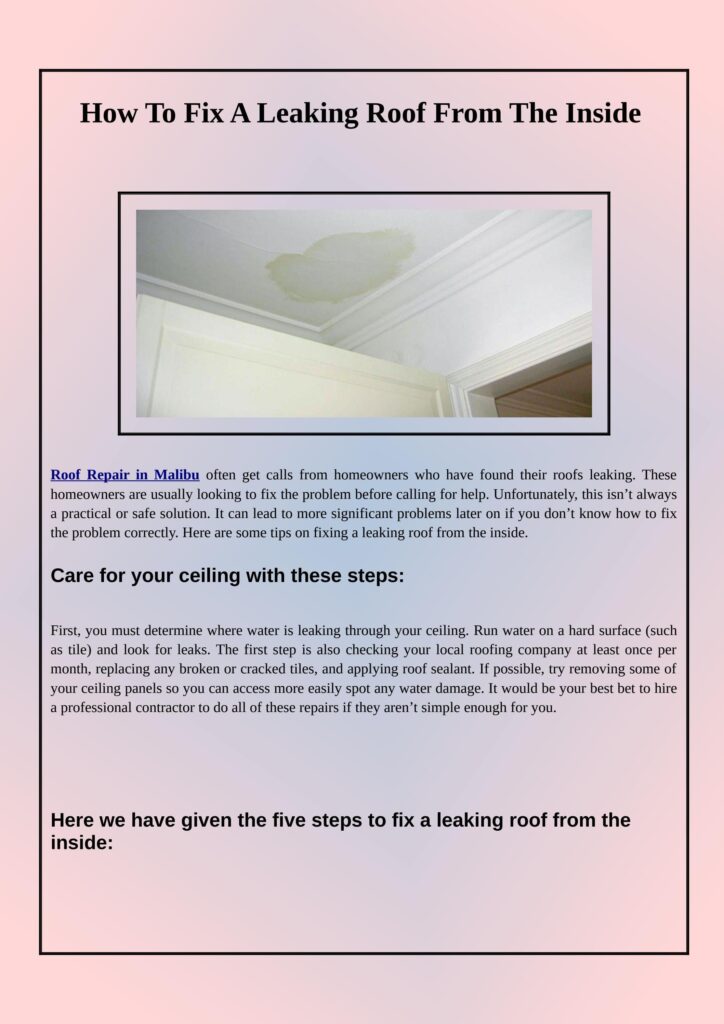
This image is property of image.isu.pub.
Inspect the Attic
Gather Required Tools
Before you begin inspecting your attic for leaks, it is essential to gather the necessary tools. You will need a flashlight or headlamp to provide adequate lighting in the dimly lit attic space. Additionally, having a notepad and pen handy will allow you to jot down any observations or potential problem areas that you come across during your inspection.
Check for Water Stains
One of the first steps in identifying a roof leak is to look for water stains in your attic. Start by carefully examining the ceiling and walls for any discoloration or moisture marks. These stains can indicate the presence of a leak causing water to seep through the roof. Take note of the location and size of any water stains you find as this information will be helpful later when you investigate the exterior of your roof.
Look for Signs of Mold and Mildew
In addition to water stains, mold and mildew growth can also indicate a roof leak. Inspect the attic for any signs of mold or mildew, such as dark spots or a musty odor. Mold and mildew thrive in damp environments, so if you notice any growth, it is crucial to address the leak promptly to prevent further damage and potential health hazards.
Examine the Roof Deck and Insulation
While inspecting the attic, it is essential to assess the condition of the roof deck and insulation. Check for signs of water damage, such as rotting or sagging areas, as well as wet or compressed insulation. These issues could indicate a roof leak that is allowing water to penetrate the attic. Inspecting the roof deck and insulation will help you pinpoint the source of the leak and determine the necessary repairs.
Check for Exterior Signs
Examine the Roof for Obvious Damage
Once you have inspected the attic and noted any potential leaks, it is time to move to the exterior of your home and examine the roof for obvious damage. Look for missing or damaged shingles, as well as any signs of wear, such as curling or cupping. These visible issues can provide clues about the condition of your roof and potential areas where leaks may occur.
Inspect Chimneys and Vents
Chimneys and vents are common areas where leaks can develop. Check around these structures for any signs of damage or deterioration. Look for loose or cracked flashing, as well as gaps or holes in the seals around the chimney and vent pipes. These vulnerable areas may require repairs or maintenance to prevent water from seeping into your home.
Check the Flashing and Roof Valleys
Flashing is a crucial component of your roof’s waterproofing system. It is typically made of metal and is installed around roof joints, chimneys, and other vulnerable areas to create a watertight seal. Inspect the flashing for any signs of damage or deterioration, such as rust, cracks, or missing pieces. Additionally, check the roof valleys, which are the areas where two roof slopes meet, as they can be prone to leaks. Make sure the valleys are clear of debris and in good condition to prevent water from infiltrating your home.
Perform a Hose Test
Choose a Dry Day for Testing
Before conducting a hose test, it is important to choose a dry day with minimal chances of rain. Testing your roof for leaks when it is already wet outside can produce inaccurate results and may make it difficult to detect the source of the leak. Picking a dry day will ensure that any water entering your home during the test is a result of a genuine leak.
Start at the Lowest Point on the Roof
To perform a hose test, begin at the lowest point of your roof and work your way up. This will help you identify the precise location where water is entering your home. Start by spraying a small amount of water on the roof and gradually increase the water flow as you move along. Be systematic in your approach and thoroughly wet each section before proceeding to the next.
Gradually Increase the Water Pressure
As you continue the hose test, gradually increase the water pressure to simulate heavy rainfall conditions. This will help you identify whether your roof is susceptible to leaks under normal weather circumstances. Pay close attention to any areas where water begins to penetrate your home and take note of these locations for further examination and repair.
Observe the Interior for Leaks
While conducting the hose test, it is essential to have someone inside your home observing for any signs of leakage. This person can be in the attic or on the top floor, keeping an eye out for any water seepage or dripping. Communication between the person conducting the test and the observer is crucial to accurately pinpoint the source of the leak.
Use Smoke to Identify Leaks
Choose a Windless Day
When using smoke to detect roof leaks, it is important to choose a day with calm or minimal wind conditions. Wind can disrupt the flow of smoke and make it difficult to identify the exact areas where the smoke is escaping. A windless day will ensure that the smoke moves consistently and helps you pinpoint potential leak areas accurately.
Light a Smoke Pencil or Incense Stick
To begin the smoke test, light a smoke pencil or incense stick and let it produce a steady flow of smoke. These tools generate a visible stream of smoke that can easily be observed and tracked. Hold the smoldering end of the smoke pencil or incense stick near the areas where leaks are suspected, allowing the smoke to waft around the potential leak areas.
Move the Smoke along Potential Leak Areas
Gently move the smoke pencil or incense stick along potential leak areas, such as roof joints, chimneys, vents, and areas with visible damage. The smoke will be carried by any airflow caused by a roof leak. Observe the smoke closely to see if it changes direction or gets sucked into any openings, as this can indicate a potential leak location.
Note the Locations Where Smoke Escapes
As you move the smoke along the roof, take note of any locations where smoke escapes or is drawn inside the structure. These locations often indicate the presence of a leak. Once you have identified the areas of concern, further investigation and repair can be undertaken to rectify the problem and prevent water intrusion.
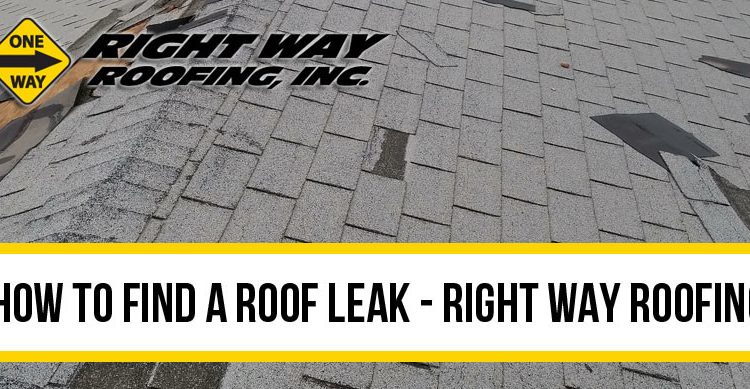
This image is property of azroof.com.
Inspect the Roofing Material
Look for Damaged or Missing Shingles
When inspecting your roofing material, pay close attention to the condition of the shingles. Look for any damaged or missing shingles that may create openings for water to penetrate your roof. Damaged or missing shingles can result from various factors, including severe weather, age, or improper installation. Identifying and replacing these shingles promptly will help maintain the integrity of your roof and prevent leaks.
Check for Curling, Cupping, or Clawing Shingles
Curling, cupping, or clawing shingles can also be signs of potential roof leaks. Curling occurs when the edges of the shingles start to curl upward, exposing the underlying layers to moisture. Cupping refers to when the center of the shingle sinks while the edges remain raised, creating a concave shape. Clawing describes shingles that have raised edges and a middle section that remains flat. Any of these conditions can compromise the waterproofing of your roof and lead to leaks if left unaddressed.
Inspect Roofing Tiles for Cracks or Dislodgment
If your roof is made of tiles, it is crucial to inspect them for any cracks or dislodgment. Cracked tiles can allow water to seep in, especially during heavy rainfall. Dislodged tiles can create gaps and expose the underlying layers of your roof to moisture. Carefully examine each tile to ensure they are in good condition and properly secured. Replacing any cracked or dislodged tiles will help maintain the functionality and durability of your roof.
Check Roofing Penetrations and Sealants
Inspect Around Chimneys, Skylights, and Vent Pipes
Roofing penetrations, such as chimneys, skylights, and vent pipes, require special attention during the inspection process. Check around these areas for any signs of damage, such as missing or cracked flashing. Ensure that the seals around these penetrations are intact and watertight. If you notice any issues or suspect a leak, it is recommended to consult a professional roofer to properly repair and seal these vulnerable areas.
Verify the Integrity of Flashings and Boots
Flashings and boots, typically made of metal or rubber, are essential components in sealing roofing penetrations. Inspect the flashings and boots to ensure they are in good condition and properly attached. Look for signs of deterioration, such as rust, cracks, or separation from the roof. These issues can compromise the integrity of the seals and allow water to enter your home. Repair or replacement of damaged flashings and boots should be carried out promptly to prevent leaks.
Check for Cracked or Dried Caulking and Sealants
Roofing penetrations often require the use of caulk or other sealants to provide an additional watertight barrier. Over time, caulk can crack or dry up, compromising the seal and creating an entry point for water. Inspect the caulking and sealants around roofing penetrations for any signs of deterioration. Replace any cracked or dried caulk to maintain an effective seal and prevent leaks from occurring.

This image is property of 4everroofing.com.
Investigate Gutters and Downspouts
Clear Debris and Obstructions from Gutters
Gutters play a crucial role in diverting water away from your roof and foundation. However, if they become clogged with debris, such as leaves, twigs, or dirt, water can accumulate and overflow, potentially causing roof leaks. Clear any debris and obstructions from the gutters regularly to ensure proper water flow and prevent water from backing up onto your roof.
Check for Misaligned or Damaged Gutter Sections
Inspect the gutters for any misaligned or damaged sections. Over time, gutters can sag or pull away from the roof, creating gaps where water can escape. Additionally, dents or cracks in the gutter sections can compromise their functionality, leading to leaks. If you notice any misalignment or damage, consider repairing or replacing the affected sections to maintain the effectiveness of your gutter system.
Inspect Downspouts for Clogs or Disconnects
Downspouts are responsible for carrying water from the gutters down to the ground. Check the downspouts for any clogs or disconnects that may impede the flow of water. Clogged downspouts can cause water to back up onto the roof, increasing the likelihood of leaks. Ensure that the downspouts are securely attached and free from any debris to effectively channel water away from your home.
Look for Interior Signs of Leakage
Examine Ceilings and Walls for Water Stains
Interior signs of a roof leak can manifest as water stains on ceilings and walls. Inspect these areas for any discoloration, yellowing, or dark patches that may indicate water intrusion. Water stains may not always be directly below the source of the leak, so it is important to carefully examine adjacent walls and ceilings as well.
Check for Sagging or Warped Areas
In addition to water stains, look for any sagging or warped areas on your ceilings or walls. These can be signs of prolonged water exposure, indicating an ongoing roof leak. If you notice any areas that appear swollen, uneven, or bulging, further investigation is warranted to identify the source of the leak and address it promptly.
Inspect Mold or Mildew Growth
Mold and mildew thrive in damp environments, making them common signs of a roof leak. Inspect the ceilings and walls for any visible mold or mildew growth. Look for dark spots, fuzzy patches, or a musty odor, as these are indicative of microbial growth. If you detect any mold or mildew, it is essential to address the leak and remediate the mold to protect your health and prevent further damage.
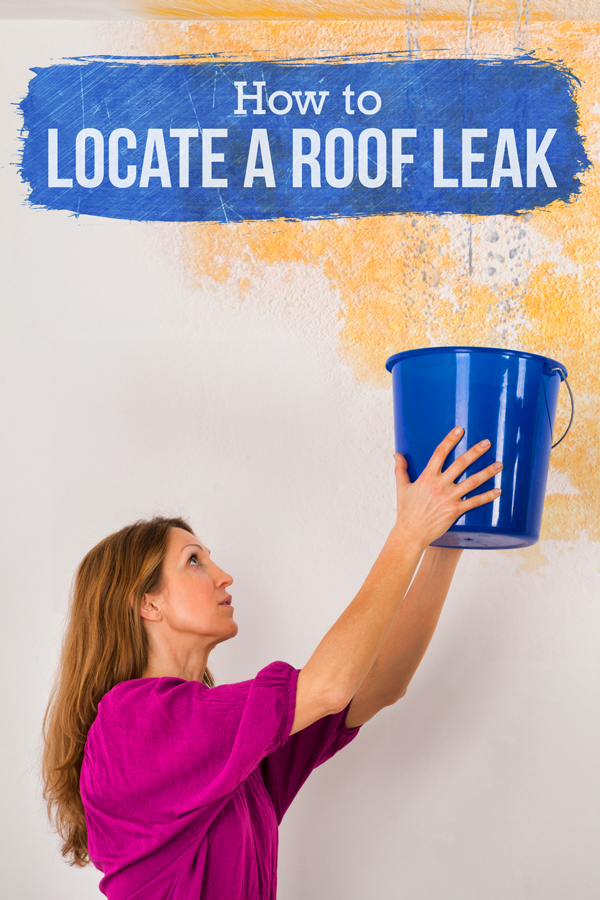
This image is property of www.budgetdumpster.com.
Verify Plumbing and HVAC Outlets
Inspect Roof Vent Pipes
Roof vent pipes are used to ventilate plumbing systems in your home. Inspect these pipes for any signs of damage or deterioration. Ensure that the seals around the pipes and flashing are intact and in good condition. Damaged or improperly sealed vent pipes can allow water to enter your home, leading to potential leaks. If you encounter any issues, consult a professional plumber to properly repair or replace the damaged components.
Check Exhaust Fan Vents
Exhaust fan vents are another potential area where leaks can occur. Inspect these vents for any signs of damage or separation from the roof. Verify that the seals around the vents are intact and properly sealed. Maintaining the integrity of the exhaust fan vents is essential to prevent water from infiltrating your home and causing leaks.
Examine Chimney Stacks and Skylight Wells
Chimney stacks and skylight wells should be thoroughly inspected for potential leaks. Check the flashing and seals around these structures for any signs of deterioration, such as cracks, gaps, or missing parts. Properly sealed and maintained chimney stacks and skylight wells will prevent water from entering your home through these vulnerable areas.
Consider Professional Assistance
Hire a Licensed Roofer or Inspector
If you are unable to identify the source of the roof leak or if the necessary repairs exceed your DIY skills, it is advisable to hire a licensed roofer or inspector. These professionals have the expertise and experience to assess your roof thoroughly and accurately diagnose the cause of the leak. By hiring a licensed professional, you can ensure that the necessary repairs are carried out correctly and efficiently.
Seek Expert Advice for Complex Leak Issues
In some cases, roof leaks may be challenging to diagnose and repair. If you are dealing with a complex leak issue, it is best to seek expert advice. Professional roofers or leak detection specialists can utilize advanced tools and techniques to identify hard-to-find leaks. Their expertise can help you pinpoint the source of the leak and determine the most appropriate solution to prevent further damage.
Arrange Regular Roof Maintenance
Prevention is key when it comes to roof leaks. To minimize the risk of leaks and prolong the lifespan of your roof, it is crucial to arrange regular roof maintenance. Hiring a professional roofer for routine inspections and maintenance can help identify and address potential issues before they escalate into major leaks. Regular maintenance can also extend the longevity of your roof, saving you money in the long run.
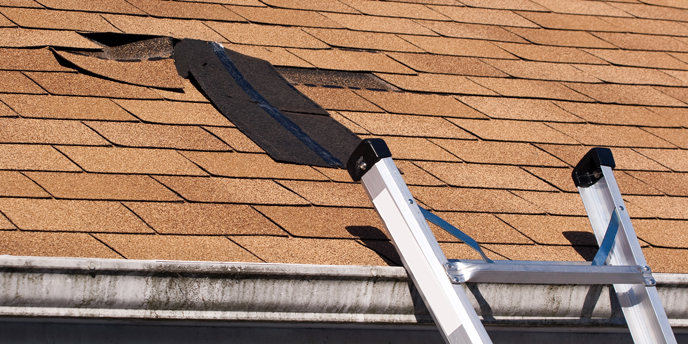
This image is property of www.budgetdumpster.com.
